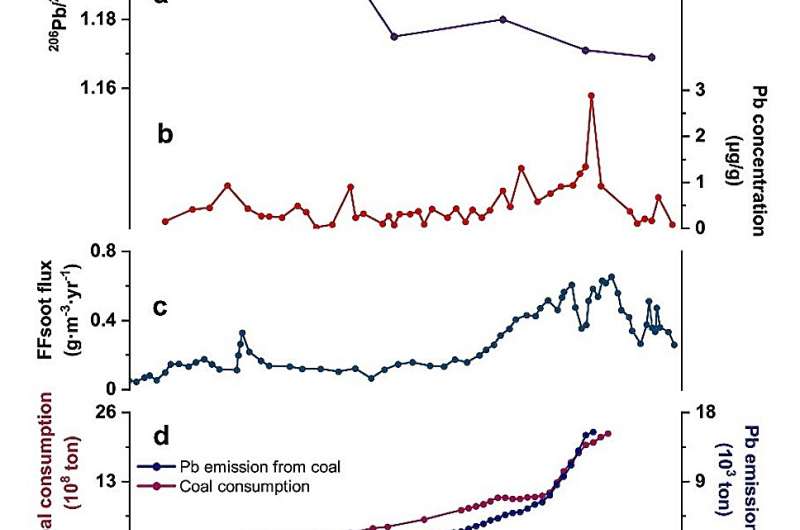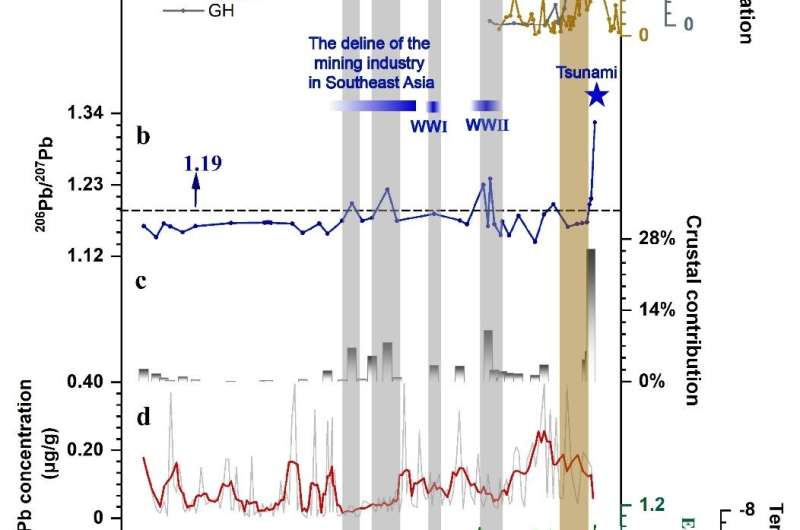This article has been reviewed according to Science X's editorial process and policies. Editors have highlighted the following attributes while ensuring the content's credibility:
fact-checked
peer-reviewed publication
trusted source
proofread
Researchers reveal anthropogenically-induced atmospheric lead cycle in low-latitude Asia

In recent decades, environmental lead (Pb) pollution has posed a significant threat to public health and ecological systems due to its harmful and irreversible effects. It has also been proposed that the distinct Pb pollution signals in geological archives may define the new Anthropocene epoch.
As a result, scientists are encouraged to focus on global Pb pollution patterns derived from human activities. While previous Pb studies have provided a deep insight into Pb release, migration, and deposition at mid- and polar latitudes, the reconstructions of regional Pb pollution at low latitudes are very limited.
A joint research group led by Tan Liangcheng from the Institute of Earth Environment of the Chinese Academy of Sciences (CAS), in collaboration with other researchers from Thailand, the United States, and Israel, investigated for the first time the effects of atmospheric circulation and anthropogenic Pb emissions on the regional Pb cycle in Asia-Australia by using stalagmite-based Pb records from Klang Cave in southern Thailand and Xianrenyan Cave in Guangdong Province, China.
The research is published in the journal Global and Planetary Change.
They found that the Pb records of XRY24 from Xianrenyan Cave revealed the Pb emission history in Guangdong Province over the past ~70 years. While the Pb records of TK131 from Klang Cave, located in the transition region of the Asian-Australian monsoon, revealed Pb emissions over a large region, with local Pb emissions and long-range transport of Pb pollutants jointly influencing the Pb cycle in the low-latitude Asia-Pacific region.
Moreover, the long-range transport of Pb pollutants was influenced by the strength of the East Asian Winter Monsoon (EAWM), with high (low) amount of Pb pollutants transported from the upwind areas to the study area during the strong (weak) EAWM before 1980 AD. However, it was more influenced by regional industrial Pb emissions after 1980 AD.

This indicated that the ever-increasing anthropogenic emissions could surpass the atmospheric circulation controls on the regional Pb cycle, providing a new perspective for understanding the relative influence of natural and anthropogenic forcing.
Furthermore, they suggested that strict pollution control policies should be implemented to reduce regional Pb pollution during the Anthropocene. They also confirmed that speleothems can record atmospheric Pb deposition on a large scale, which would play a crucial role in studying the global Pb cycle.
More information: Tianli Wang et al, Anthropogenically-induced atmospheric Pb cycle in low-latitude Asia since the Industrial Revolution recorded by high-resolution stalagmites, Global and Planetary Change (2023). DOI: 10.1016/j.gloplacha.2023.104337
Journal information: Global and Planetary Change
Provided by Chinese Academy of Sciences





















